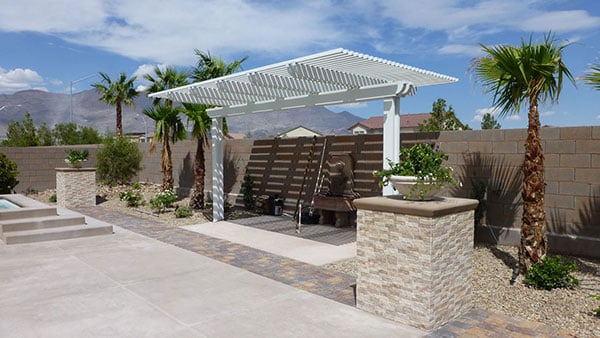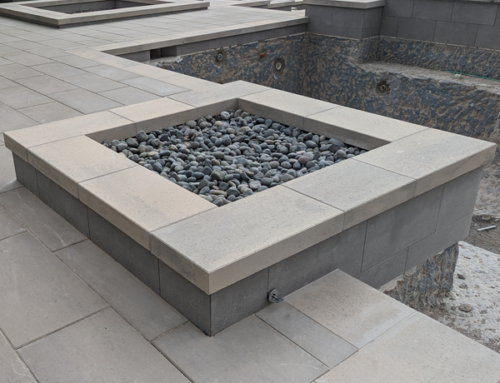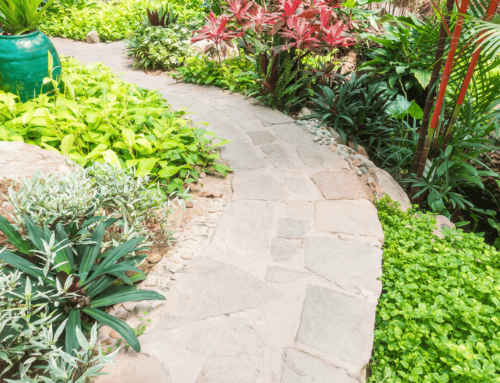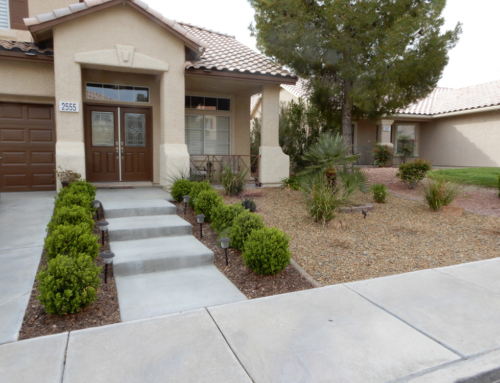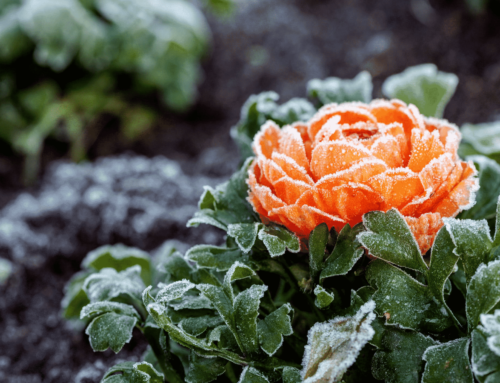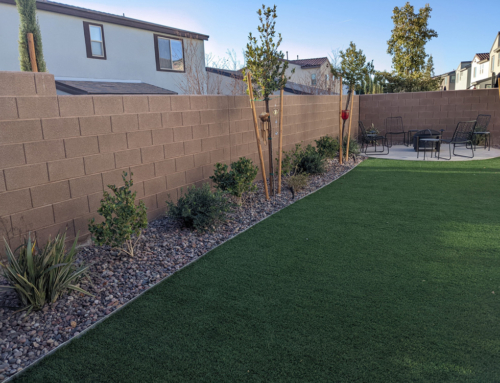With the right knowledge and planning, anyone can create a desert landscape that will be both beautiful and sustainable. However, it is often best to leave the heavy lifting to the professionals, as even small mistakes can set your landscaping up to fail in the future. Read on to get some helpful tips to improve your desert landscaping!
What Makes Desert Landscaping in Las Vegas Different From Other Climates?
Desert landscaping is a unique style of landscaping that is popular in the desert regions such as Las Vegas, North Las Vegas, and Henderson. The main focus is on water conservation and sustainability. Las Vegas is in the middle of its monsoon season and it is clear that being prepared for heavy rainfall is important. Living in both a desert and a valley while surrounded by mountains, makes sustainability and thoughtful planning even more important as there is a much higher risk of flooding and damage to irrigation systems.
The steps and materials needed to create a desert landscape are certainly similar to landscaping projects in other climates, but there are some key differences we need to pay attention to in the desert.
One of the most important things to consider aside from flood preparation is ensuring that the land itself only uses plants that thrive in a desert climate such as cacti and succulents. There are plenty of climate-appropriate alternatives to choose from that emulate the plants found in other regions, such as Mexican Feather grass or various forms of Desert sage. These shrubs can help bring a country look, without being an issue for irrigation, and they can also withstand the direct sunlight of the desert climate.
Landscape design is no easy task, especially when it comes to designing for an area with little rainfall or water resources, that at the same time is at risk of flood all summer long. Desert landscapes are notoriously difficult to design because they require careful attention to detail as well as a keen understanding of water usage and irrigation techniques.
Here in Las Vegas, there are strict watering regulations (and steep penalties!) due to drought and the record low levels of the city’s main water source, Lake Mead. As a result, we don’t currently recommend live grass in your desert landscaping, as it requires constant maintenance and is not very sustainable.
There are several artificial turf options on the market that are low maintenance and can get you that same suburban backyard you’ve always wanted. Stone pavers and concrete are other eco-friendly options that can provide a great aesthetic and truly turn your yard into an oasis.
How to Build Your Desert Backyard for Sustainability and Style
A desert backyard is a place where you can enjoy the sun, the sand, and the sky. The best part about it is that you can do it in style while also being conscious of the environment. Water usage is a big factor in Las Vegas landscaping right now, and you should be making efforts to conserve.
Important Steps to Begin Planning Your Desert Landscaping Project:
- Step back and look at your entire property. You need to take into consideration how much shade or sun your property gets throughout the day before starting any design process. Certain plants require less direct sunlight. If you are planning a pool or jacuzzi you want to make sure it’s in an area with lots of sunlight to keep the water warm.
- Take a look at which plants grow in your area naturally and choose which ones will work best for your space and climate. Our landscaping professionals have a vast knowledge of which plants work best for different situations and are glad to help you make these decisions.
- Choose a layout scheme for your backyard so that you know how to arrange all of the features of your backyard such as stone-paved paths, flat hard surface areas for a BBQ or outdoor seating, a home garden, or even a pool.
- Once you have an idea of how the layout will look, you need to hire a professional to ensure your existing or new irrigation systems are laid properly, and that any digging is safe so that no existing plumbing is damaged. This is absolutely the most important step. Cutting corners here could cost you tens of thousands of dollars.
What are the best materials for desert landscaping?
Some people think that the best way to landscape a desert is to plant succulents. Others believe that cactus plants are the best option for this type of environment. Others believe that rock landscaping is the best option for this type of environment.
We think a little bit of each can really take your landscaping project to the next level. The key is choosing the right materials for your backyard to remain both sustainable and entertaining.
Here is a list of some popular options to help you decide which direction to go.
- Shrubs & Alternatives: Germander Border Plants, Cassia Desert Shrubs, Honeysuckle, Aloe Vera, Agave, Yucca, Sage
- Grass Alternatives: Artificial Turfs, “groundcover” such as Jasmine, Rocky Ice Plant, or Daisies
- Low-Maintenance Features: Honeysuckle vine, Jasmine Espellier, Boganvilla vine, Fan Palm, Canary Palm, and Palo Verde trees
- Rocks and Stones: Red or Gold Granite Boulders, Pink Sandstone, River Rocks
- Hard Surfaces and Pavers: Custom Poured Concrete, Flagstone, and Granite
For more information on choosing the perfect stone materials, check out this blog: Best Stones for Landscaping
Common Mistakes People Make When Planning a Desert Garden
The first mistake is not considering the climate of your region. If you live in an area with a dry climate, make sure to plant drought-tolerant plants that are adapted to your specific environment.
Another common mistake is not taking into consideration the amount of water you will have access to on a daily basis. You need to know how much water you will be able to give your plants on a regular basis so that they can thrive in this environment.
It is also important to note that the type of soil in your region and the size of your plants will play a large role in how much water they need. Typical potting soil is often not going to work for desert-specific plants. Using soils with peat moss, sand, small rocks, or various artificial components tends to work best because they have a natural ability to allow the water to flow away from the plant, so you don’t get root-rot or over-water the plants.
Another common mistake is planting too many plants in one area. This reduces the amount of water that your plants can each soak up, and makes it hard to give certain plants more or less water. Some plants like cacti and succulents, require much less water than other plants so keeping some distance between them allows you to manage which ones get the most water.
How To Turn Your Yard Into a Desert Oasis!
There are many ways to make your yard look like a desert oasis. One of the best ways is to create a cacti garden, placing multiple breeds in various sizes and colors all in one walled-in area. You can also plant other desert plants such as yucca, agave, and prickly pear if space permits. If you want to add more color, you can add succulents or flowers. Luckily most of these plants can live together without issue, as most of them require similar soil and watering.
Another way to turn your yard into a resort-at-home is by adding palm trees and decorating with various hard materials like stone or iron. Palm trees provide shade and protection from rainfall, and also help bring the beauty of the landscape up into the air, making it feel far more impressive.
Iron features can really help tie your landscaping in. They provide a somewhat mobile surface for vines to easily grow on, while preventing any damage to retaining walls. If build high enough, these can also offer additional privacy beyond any existing walls that surround your property.
Iron gates are another common feature you may find in high-end desert yards. replacing an old entryway to the backyard with a beautiful custom feature can really help to bring your yard up to another level, while also providing some functionality and potential protection. Superficial gates can also be made to help segment your garden from the rest of your yard!

The feature that people usually think of first when creating an oasis, is a pool or jacuzzi. Out in the desert, having one of these can seem like a great idea, but many people rarely actually use them. So, make sure it is something you intend to use. Otherwise, you could be burning money for nothing, and losing a lot of functional space in your yard for other features such as a barbecue or outdoor kitchen!
Your Desert Yard Can Be So Much More!
If you’re a homeowner in the desert, you probably guessed that your yard is not going to be the lush, green, grassy lawn that so many people expect. But it doesn’t have to be a flat pit of sand if you consider these tips to improve your desert landscaping!
There are many options out there to get your yard looking like a beautiful resort-style space or a flourishing walk-in garden. All it takes is some imagination, a little research, and a team of knowledgeable pros who can steer you in the right direction!

